How colleges and universities in Oregon's Mid-Willamette Valley are tackling enrollment issues
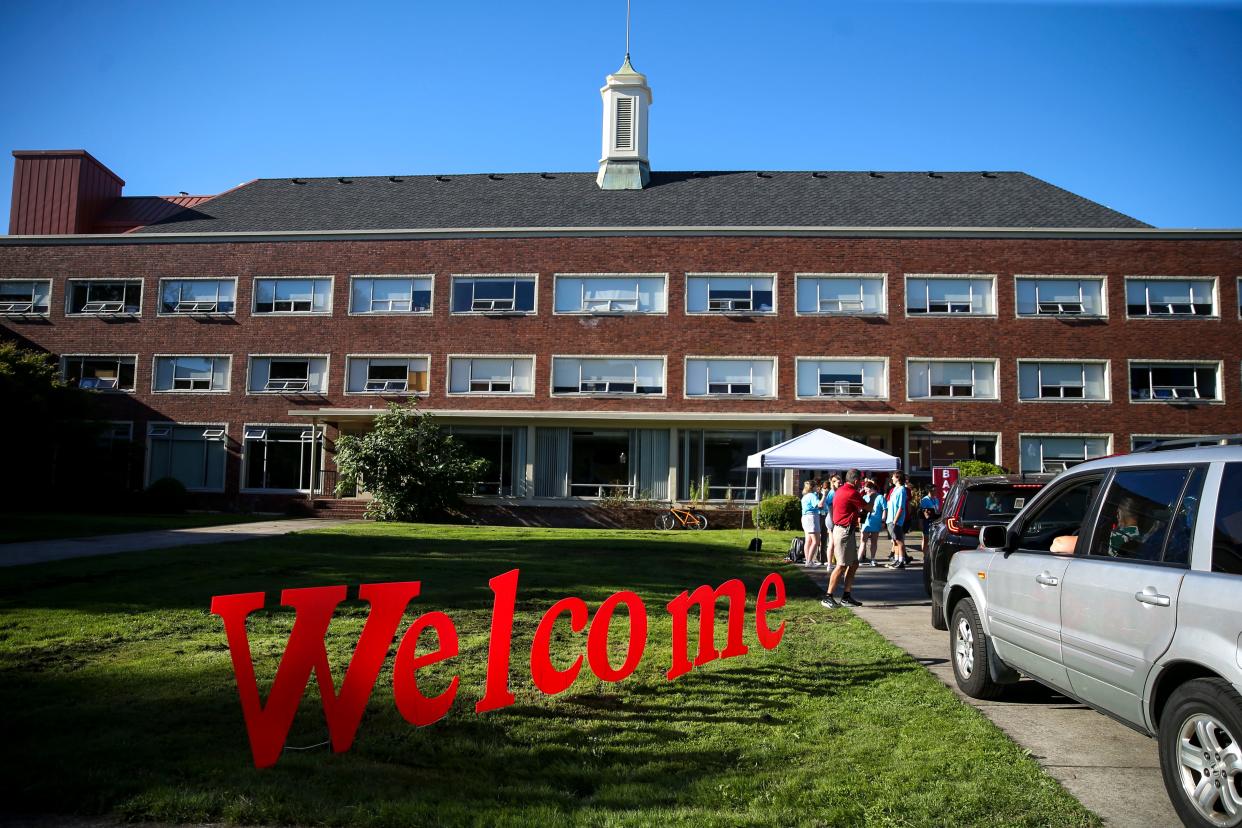
Itzel Garibay Cervantes was alone in her room, working on college applications and federal financial aid forms when she began "bawling (her) eyes out."
"My whole life had been, 'I'm gonna go to college ... and be the first one in my family to graduate,' " she said. "It kind of got to the point where I was really frustrated because I didn't know how to fill out a form. I didn't know how to fill out a college application, and I didn't know if I was putting in the right tax information for FAFSA.
"It was just really hard and I didn't really know where to turn for those resources."
Garibay Cervantes, 19, is a first-generation, Latina student and a 2021 McKay High School graduate. She wasn't planning to stay in Salem for college, and when she became overwhelmed, applying to an unfamiliar world in the middle of a global pandemic, she seriously thought about quitting altogether.
She wasn't the only one.
College enrollment figures released in May by the National Student Clearinghouse Research Center show 662,000 fewer students enrolled in undergraduate programs in the spring of 2022 than the year before — a 4.7% decline. Graduate and professional student enrollment also declined 1% from the prior year; community colleges were among the hardest hit.
Oregon's college enrollment statewide had its worst figures in three years, down 3.3% in 2020 to 5.5% in 2022, according to data analysts at Scholaroo, a scholarship search tool.
Compared to other states, Oregon's 2022 decline was the10th highest in the nation. Only eight states saw an increase in enrollment.
But institutions in the Mid-Willamette Valley have seen varying effects, with community colleges, private universities and state schools impacted and responding differently.
Finding a place as a first-generation student
Willamette University is the oldest university in the western United States, founded in 1842. The private liberal arts institution headquartered in Salem enrolls about 1,290 undergraduate students, according to its latest U.S. Department of Education college scorecard. Its average annual costs total $34,294, according to the scorecard, and past students' median annual earnings are $57,036. These earning data are based on individuals who received federal student aid and began college at the specific institution 10 years prior, regardless of their completion status.
Garibay Cervantes decided to continue applying for college because of advice from her brother. He said, "I shouldn't say I don't want to do something if I haven't at least tried it once."
She decided to try it before deciding it wasn't for her. And she's glad she did.
Garibay Cervantes is now a rising sophomore at Willamette University. She was waitlisted at first and said she had to work harder than others to secure her spot as a result. She struggled when first moving onto campus. "There didn't seem to be a lot of doors that opened for me," she said.
Garibay Cervantes grew up in the Willamette Academy mentorship program partnered with Salem-Keizer Public Schools that specifically helps first-generation students. At the university, she joined Ohana, a freshman orientation group focused on transitional needs for students of color and first-generation students. She also joined the group Alianza to connect with other Latinx students.
She participates in programs like these in addition to her schoolwork and a job. She said she's worked since she was 16 in everything from retail to the food industry, and now at the Swegle Boys & Girls Club.
The programs helped her transition and integrate herself on campus, overcoming her imposter syndrome and finding ways to make her family feel comfortable on the college campus, too.
"I have to (remind) myself that I am as valuable as anybody else here, and I deserve to be here as much as everyone else," she said. "I didn't feel like I was worthy to be taking up that space. In a way, I kind of felt guilty that my parents never got that opportunity. But when I started changing my mind about that, I started looking at it in ways like, 'My parents have worked so hard for me to just thrive here.' It definitely changed my mindset."
Looking to the new school year, Garibay Cervantes said she's excited to expand her involvement and continue being a voice and advocate for first-generation students.
"It's not easy and it's never going to be easy, but having those support systems made it a lot easier," she said.
Garibay Cervantes isn't sure what she wants to major in or what she wants to do professionally when she graduates. She knows she wants to network and build connections while at Willamette, and that she wants to have a positive impact on youth like her in the future.
"I hope someday there's a little girl out there with crooked teeth and dark skin who's so excited because they see me thriving, and they see that I look like them and I talk like them and that one day, hopefully, they can be in the same position."
New programs, reduced tuition among the reasons for Willamette's freshman class boom
William Mullen, vice president for enrollment management at Willamette, said the residential liberal arts college for undergraduate students had a lower than expected enrollment in the fall of 2021. This, he said, was mostly because prospective students couldn't come on campus for a big portion of the year due to COVID.
"(This) is a big deal for an institution like this that's very relational in nature," Mullen said, adding that prospective students couldn't sit in on classes, meet with professors or learn what it's like to be part of the community.
Retention of previously enrolled students did not decline during the pandemic to Mullen's knowledge. And while some incoming freshmen deferred from the fall of 2020 to 2021, and from 2021 to 2022, he said they didn't defer in large numbers.
While the pandemic brought down undergraduate enrollment, Mullen said they've since "completely regained those students," pointing to a large incoming class of more than 525 undergraduates and 40 transfers this fall. This has led the university to hire additional instructors, especially for introductory classes more often taken by freshmen.
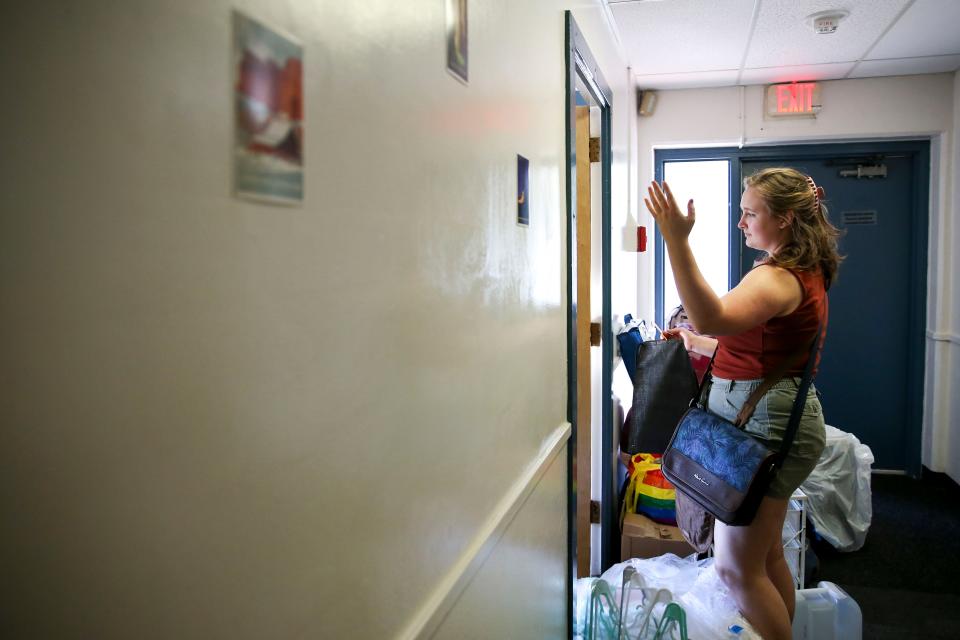
Looking at other private institutions, Mullen said it's a mixed bag for who is doing well and who isn't.
"Privates are struggling, some of them are struggling with enrollment, other ones are doing fine," he said. "It seems like community colleges are having a more difficult time enrolling students... . I think they have more competition with people who go on to the trades ... and we don't have that."
One major issue Mullen is seeing is that families are not completing the Free Application for Federal Student Aid form in the same proportion as they did prior to the pandemic. The FAFSA form must be completed for students and families to apply for financial aid for college or graduate school. This is the same document Garibay Cervantes struggled to complete on her own.
"The biggest concern right now that I have is around inflation," Mullen said. Especially middle-class Oregonians, he added, are seeing household expenses increase and then questioning their ability to invest in college now or in the future. This is especially challenging as state grant programs in Oregon are not as robust as in places like Washington state, California and Minnesota.
"Middle-class Oregonians oftentimes don't receive any federal or state financial aid," he explained. "The financial aid, talking about grants and scholarships, almost all of it comes from Willamette or, in some cases, all of that comes from Willamette."
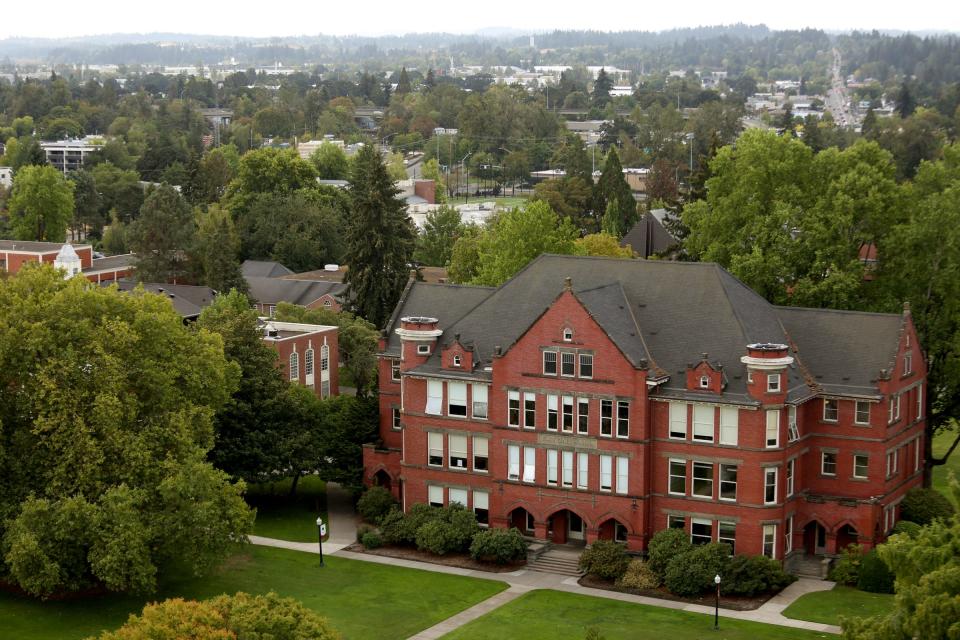
Willamette reset its standard tuition price for the 2021-2022 academic year, meaning its standard undergraduate tuition rate was lowered by almost 20%, in order to more accurately represent what students truly pay after scholarships and financial aid are applied.
That, Mullen said, as well as the school's merger with Pacific Northwest College of Art, and adding business management as a major for undergraduate students and data science for both undergraduate and graduate students, have helped boost enrollment numbers.
Willamette officials also want to show prospective students the benefit of coming to a school like theirs.
"You think about everything high school students have gone through with disrupted schedules and remote learning and these kinds of things," Mullen said. "I think families are now looking at us and saying, 'Okay, (it's) a highly supportive community, professors support students,' so on and so forth, and I think that's really helping us as well."
Community college enrollment picks up after steep COVID declines
Chemeketa Community College, headquartered in Salem with campuses across the Mid-Valley, has about 7,000 undergraduate students, according to the school's U.S. Department of Education college scorecard. Its average annual costs are estimated at $6,338, according to the scorecard, and the median earnings of its past students, regardless of completion, are $35,495.
Enrollment at Chemeketa Community College had been on a slight decline for the past five years, but when COVID hit in 2020, the decline became significant, reaching a 20-25% drop, explained Marie Hulett, executive director for institutional advancement.
This was true not only at Chemeketa, she said, but for community colleges all over Oregon.
"Our district is still recovering from the impacts of COVID," Hulett said. "Community members who may have wanted to get a college education are in the position of having to work to make ends meet."
This year, however, enrollments are growing. Hulett said Chemeketa has actually surpassed last fall term with regard to headcount.
But with that increase, they've also noticed many students have opted to attend Chemeketa part-time rather than full-time.
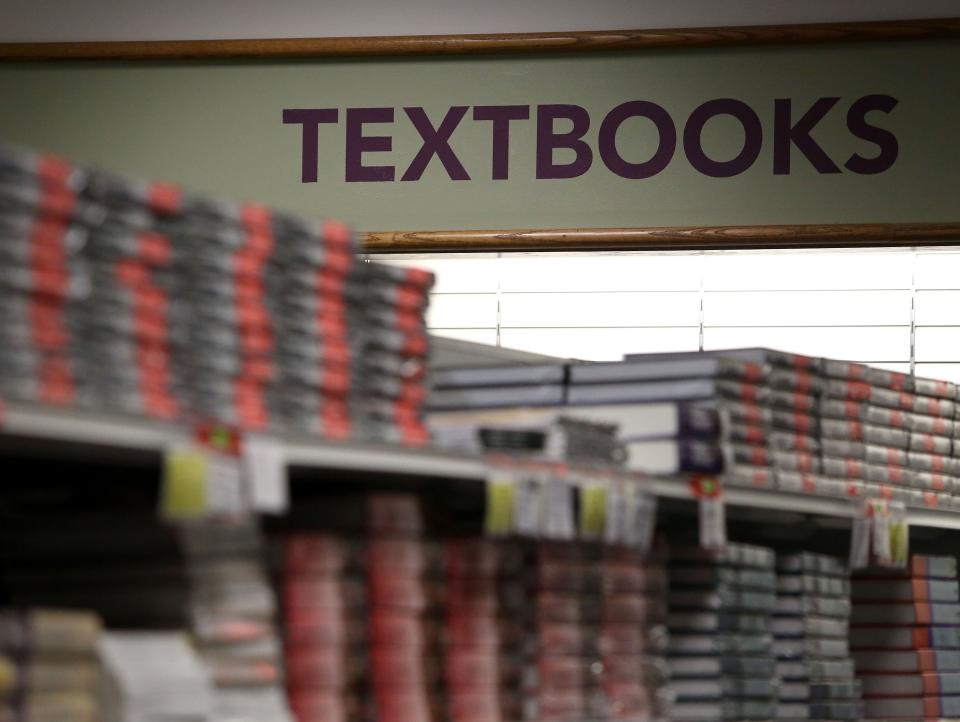
Early forecasts led officials like Hulett to prepare for a 5% drop in enrollment at Chemeketa. But if enrollments continue in the direction they are going so far, she said, they will either remain flat or surpass last year's enrollment numbers.
Hulett said ever since COVID affected enrollment, Chemeketa has instituted a modified hiring freeze, which means that positions that are vacated and not essential to manage current service levels are not filled. Still, Hulett said students should be able to find all the classes they need and have access to services as well.
The effects of COVID and the economy "have really been tough to get through," she said, "but education and training truly is a path to a better future."
"Sometimes, an immediate job that provides a steady income is viewed as a better choice than investing time and money in college," Hulette said. "It's important for one to look beyond the present and decide what steps need to be taken now for ensuring a successful future and gratifying career."
She encouraged anyone interested in getting the education and training needed to obtain a living-wage-career to come to Chemeketa, talk to their advisors, find out about financial aid options, get student jobs on campus, apply for scholarships and learn about other wrap-around services they offer that can "make college possible for folks who think it is not."

Chemeketa has many career and technical education programs, some of which can be completed in weeks, she explained. Some of the programs are grant funded and some, like their job corps scholars, are free to students. They also offer transfer degrees that make obtaining a bachelor's degree more affordable, she said.
She said Chemeketa wants to make sure "everyone who wants to pursue higher education has the opportunity to do so."
"Higher education enrollments across the country are declining, and we hope this will change," Hulett said. "Data show that those who obtain higher education certificates or degrees earn more, have more job satisfaction, and some studies show they even have better health."
OSU continues to see enrollment gains, less affected by COVID declines
Oregon State University in Corvallis enrolls about 26,050 undergraduate students, according to its U.S. Department of Education college scorecard. Its average annual costs total $21,508, according to the scorecard, and past students' median earnings are $56,619.
Unlike others in the Mid-Valley, OSU has seen enrollment increase every year since 2000, said Steve Clark, vice president for university relations and marketing at Oregon State University.
Since 2000, OSU’s undergraduate enrollment grew from 16,788 to 28,607 students last fall. Graduate student enrollment grew from 3,016 to 5,833 students during that time.
Even in recent years, they've seen declines compared to years past, but they're still growing. Between 2016 and 2021, Clark explained in an email to the Statesman Journal, the university’s total enrollment increased by just under 9%. In the last three years, it increased by approximately 6.5%.
"OSU is Oregon’s largest university and historically is the only Oregon public university to have seen its enrollment increase every year over the past decade," he said.
Clark credits this to the university's ability to "adapt and grow its impact and momentum" over time. This includes offering in-demand programs at a variety of locations and with both in-person and online or hybrid formats for local, national and international students.
OSU serves students both at its campuses in Corvallis and Bend, and through its Ecampus, the university’s nationally top-ranked online degree program, OSU faculty teach more than 10,000 students. More than 100 degrees and programs are offered by Ecampus, Clark added.
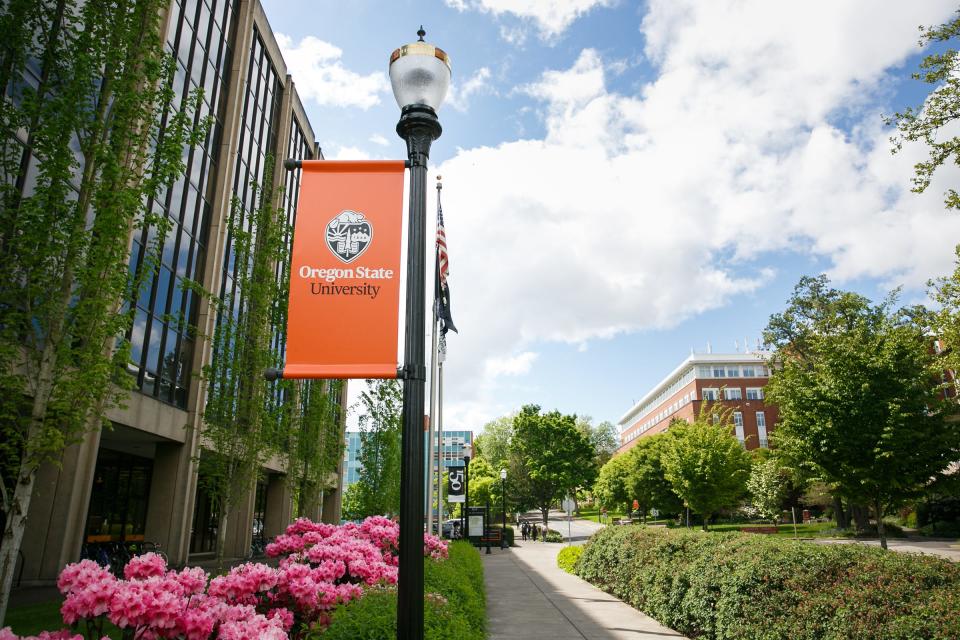
Jon Boeckenstedt, vice provost for enrollment management at OSU, said large, well-known public universities seem to be doing better with enrollment than other sectors of higher education.
“We know that economic challenges nationally, the COVID-19 pandemic and societal changes have contributed to diminished public’s perceptions of higher education, in general," Boeckenstedt said, later stating that this is the first prolonged contraction of higher education enrollments in U.S. history. "But students seem to be increasingly attracted to well-known universities with strong academic and research reputations."
Boeckenstedt did not give a firm number for the projected enrollment number of undergraduates at OSU this coming school year.
"Because we are on our third different way of registering new students in as many years due to the pandemic, it’s hard to make year-over-year comparisons," he said. "But most signs are pointing to another year of record enrollment at OSU this fall."
At OSU's main competitor, the University of Oregon in Eugene, Roger Thompson, vice president for student services and enrollment management, said UO also has had a great recruitment year.
"While we do not have official numbers at this time, we are anticipating the University of Oregon’s largest freshman class," Thompson said, adding official numbers will be available in October.
While the pandemic had significant financial impacts on OSU and universities nationally, Clark said tuition pays for approximately two-thirds of the cost of the university’s educational programs. The state pays most of the balance.
"That is a reversal of who pays the cost of higher education over the past 20-25 years and demonstrates how essential a stable and increasing enrollment is for the university’s financial health," Clark said.
In OSU’s case, tuition from enrollment — along with state funding support approved by the legislature — has helped the university sustain in-demand academic programs and services needed by students and being called for by employers, he added.
"Enrollment growth does come with costs, and in response, OSU’s budgeting has included adding instructional staff in programs with significant growth and allocating significantly increased institutional resources for student financial aid," Clark said.
"At almost all universities across the nation — other than about the very few institutions that are highly selective in their admissions and that have large endowments — a drop in student enrollment would translate into a drop in tuition revenues and impacts on operating budgets and programs," he said. "As enrollment goes for a university or college, so too goes funding. Declines in enrollment would typically result in budget ripples across most universities."
Western Oregon University responds to a decade-long downward trend
Western Oregon University in Monmouth enrolls more than 3,990 undergraduate students, according to its U.S. Department of Education college scorecard. Its average annual cost is $15,214, and its past students have median earnings of $47,041.
Western Oregon’s enrollment has been trending lower over the past decade, explained Provost Rob Winningham in a written response via email to the Statesman Journal.
There are many reasons. There's the flattening number of high school graduates in Oregon following sharp increases the 20 years prior, for example. There's also been a demographic shift, he wrote, where the university is serving an increasing number of “new majority” students for whom college is a greater financial challenge.
Western's enrollment has beenfurther impacted by the Oregon Promise initiative, which incentivizes students to attend community college. And the simultaneous declining enrollment in community colleges plays a part since many WOU students begin their post-secondary education journey there.
COVID was just the latest obstacle to recruiting new students.
"In a tight labor market, as employers struggle to fill empty positions, some have begun loosening required qualifications, including eliminating a requirement to have a four-year college degree for some positions," Winningham explained. "This trend may not be permanent, but it is a sharp reminder that the skills that we develop through a college education are not always obvious to employers.
"We must always demonstrate the relevance of a college education to the economic and social world that our students face."
Western has responded to these challenges by "expanding our vision of who we serve," Winningham said.
The university, for example, is pursuing the designation of a Hispanic Serving Institution and is working with more local and regional employers, including school districts, to create partnership opportunities for degree completion. For example, eligible local Amazon employees can enroll in one of Western Oregon’s over 200 majors, minors, certificates and concentrations with annual tuition assistance covered by Amazon.
"COVID and its broad economic impacts have reshaped student expectations of universities and the relationship between employers and employees," he said.
While the majority of WOU's courses still have an in-person component, they are seeing more students interested in taking online classes, even if they have a schedule with a mix of fully in-person and online courses.
"Students want to have more flexibility, especially if they are working or have other responsibilities," Winningham said.
Western officials also have been working to help students improve their financial aid packages, Winningham wrote. While many students choose to go to community college before transferring to a university to save money, he added, the total cost of attendance to go to WOU is comparable to many community colleges.
"One of the worst outcomes for a university student is to leave a university with student loan debt but no degree," he said. "We recently applied for and received a grant to help students who have stopped going to WOU to pay any past bills and even get some additional funding to finish their degree, if they are fairly close to graduating."
Winningham said the school projects they'll have more new students and more first-year students this fall than last year.
However, the total number of undergraduate students will likely be down, he said, in large part due to a smaller junior class, those who started fall 2020 and were a much smaller incoming class due to COVID.
According to the National Center for Education Statistics, Winningham cited, there are 9% fewer students in higher education now than a decade ago, and that trend accelerated during the pandemic.
"This is requiring many universities to recalibrate the number of courses they offer and the number of staff that support student success," Winningham said.
Western Oregon hasn’t had to significantly decrease the variety of courses, but for some, they've had to reduce the number of class options. Winningham clarified, however, that "Western Oregon and similar institutions can adjust to lower enrollments without negatively impacting student success."
The good news, he said, is that WOU has maintained a fairly low student-to-faculty ratio. In 2016, they had a student-to-faculty ratio of 14:1, now it is 12:1.
"We have reduced the number of staff over the past five years, but that has been proportionally less than the decrease in the number of students, so we actually have a higher staff to student ratio to support our students than we did a decade ago," Winningham explained.
In 2016, WOU had a student-to-staff ratio of 12:1 and now it's 9:1. This includes resources outside of academics.
"Supporting students with services, including advising, health care and mental health counseling is critical to maximizing our students' success," he said.
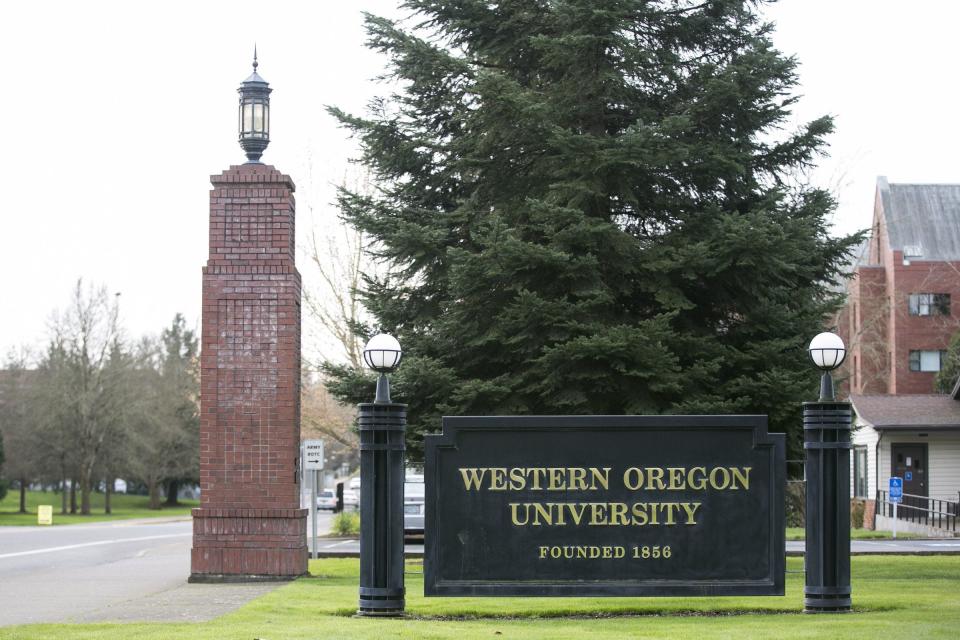
Looking forward, additional state funding will be key to supporting schools like Western.
"As state funding for higher education has decreased or stayed flat over the last years, universities have been forced to rely more on tuition to pay the costs of operation," said Western Oregon University President Jesse Peters in a statement. "Therefore, when enrollment declines, institutions struggle financially.
"Robust state funding is needed to keep tuition costs low, help universities remain strong, and best serve the citizens of Oregon," he said. "Access to four-year college degrees significantly improves the educational attainment rates in Oregon, thus strengthening the economy and improving socio-economic mobility (and) stability."
Students return to campus for the fall term
Here are the start dates for the above higher education institutions:
Chemeketa Community College's fall term starts Sept. 26
Oregon State University's fall term starts Sept. 21
Western Oregon University fall classes begin Sept. 26
Willamette University's fall semester for undergraduates begins Aug. 29
Natalie Pate covers education for the Statesman Journal. Send comments, questions and tips to her at npate@statesmanjournal.com or 503-399-6745. Follow her on Twitter @NataliePateGwin.
This article originally appeared on Salem Statesman Journal: How Mid-Valley colleges, universities are tackling enrollment

